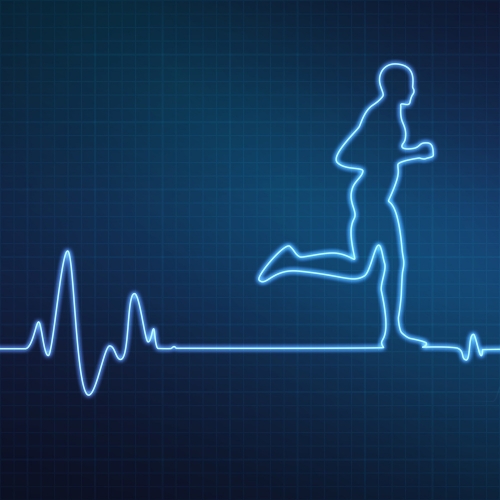In an era dominated by mental health challenges, groundbreaking research continues to emerge about natural ways to protect our psychological well-being. A landmark study published in Psychological Medicine has revealed crucial insights into how physical activity can serve as a powerful shield against depression, offering hope and actionable knowledge for millions worldwide.
The extensive study, conducted through the UK Biobank, tracked over 74,000 adults aged 40-69 years, representing one of the largest investigations into physical activity and mental health. What distinguishes this research is its innovative approach to data collection, utilizing wrist-worn accelerometers to gather objective measurements rather than relying on traditional self-reported information.
The research team monitored participants' physical activity levels and mental health outcomes over nearly eight years, providing robust longitudinal data that offers unprecedented insights into the relationship between movement and mental well-being.
Methodology and Measurement
The study employed sophisticated measurement techniques to ensure accuracy and reliability. Participants wore Axivity AX3 wrist-worn triaxial accelerometers for one week, capturing continuous acceleration data at a sampling rate of 100 Hz. This technical precision allowed researchers to measure moderate-to-vigorous physical activity (MVPA) with unprecedented accuracy, defined as minutes per week spent at 100 milligravities or more.
The findings revealed a remarkable pattern in the relationship between physical activity and depression risk. Over the median 7.9-year follow-up period, there were 3,089 incident cases of diagnosed depression, representing 4.1% of the study population.
The data showed that higher doses of MVPA were curvilinearly associated with lower depression risk, with the most substantial minute-per-minute benefits occurring between 5 and 280 minutes per week.
The Power of Movement
Perhaps one of the most encouraging aspects of the study was the discovery that any increase in physical activity, even modest amounts, showed potential to reduce depression risk.
The researchers found that the relationship between activity and mental health benefits followed a curvilinear pattern, with the most significant improvements occurring in the first 4-5 hours of weekly activity.
Optimal Activity Patterns
The study identified that optimal benefits occurred at approximately 15 hours of physical activity per week.
However, this finding comes with an important caveat: participants didn't need to reach this level to experience meaningful improvements in their mental health outcomes. The research demonstrated that even small increases in activity could contribute to better mental health protection.
Weekend Warriors vs. Regular Exercise
One of the study's most intriguing revelations challenges conventional wisdom about exercise patterns. The research found that "weekend warriors" - individuals who concentrate their physical activity into one or two days - showed similar protective benefits against depression as those who spread their exercise throughout the week.
This discovery has significant implications for how we think about incorporating movement into our daily lives, especially for those with busy schedules or limited weekday availability.
Understanding the Mechanisms
The research provides detailed insights into how physical activity influences mental health through multiple pathways. Physical activity promotes neuroplasticity, the brain's ability to form new neural connections and adapt to changes.
It also reduces inflammation and oxidative stress, factors increasingly recognized as playing important roles in depression development. Additionally, regular movement helps regulate the neuroendocrine system, contributing to better mood regulation and stress response.
Psychological Benefits and Social Connections
Beyond the physiological impacts, the study highlights the psychological benefits of physical activity. Regular movement improves self-esteem and provides opportunities for social interaction, both crucial factors in mental health maintenance.
The research suggests that these psychological benefits may be equally important as the biological changes in protecting against depression.
Methodological Strengths and Considerations
The study's use of accelerometers represents a significant advancement in research methodology. This objective measurement approach provides more reliable data compared to traditional self-reporting methods, which often suffer from recall bias and measurement error.
However, the researchers acknowledge certain limitations, including the possibility that participants modified their behavior during the measurement period.
Demographic Considerations
The study population consisted of UK adults with specific demographic characteristics, which may affect the generalizability of results. The mean age was 55.2 years, with 58% of participants being women. The researchers controlled for various factors including age, sex, racial and ethnic background, tobacco use, and socioeconomic status to ensure robust results.
These findings carry substantial weight for public health policy and individual lifestyle choices. They suggest that rigid exercise schedules may not be necessary to achieve mental health benefits. Instead, finding sustainable ways to increase movement, whether through structured exercise or daily activities, can contribute to depression prevention.
Practical Applications
The research provides valuable guidance for healthcare providers and individuals seeking to protect their mental health. It suggests that recommending flexible approaches to physical activity might be more effective than prescribing strict exercise regimens. This flexibility could lead to better adherence and more sustainable long-term activity patterns.
Special Populations and Considerations
While the study focused on adults aged 40-69, the findings have implications for various age groups and populations. The researchers note that future studies might explore how these relationships vary across different age ranges and demographic groups. They also suggest investigating how various types of physical activity might offer different benefits for mental health protection.
Role of Activity Intensity
The study examined moderate-to-vigorous physical activity specifically, but also considered the broader spectrum of movement. The findings suggest that while intense activity might offer certain benefits, any increase in physical activity level could contribute to better mental health outcomes. This insight is particularly valuable for individuals who might be intimidated by high-intensity exercise.
The longitudinal nature of the study provides valuable insights into the long-term relationship between physical activity and mental health. The nearly eight-year follow-up period allows for more confident conclusions about the protective effects of regular movement against depression, suggesting that sustained physical activity patterns may offer cumulative benefits over time.
Integration with Existing Research
This study builds upon and extends previous research in the field. While earlier studies had suggested links between physical activity and mental health, this research provides more precise, objectively measured data to support these connections. It also offers new insights into the flexibility of activity patterns while achieving mental health benefits.
Future Research Directions
The researchers identify several areas for future investigation, including the potential for more detailed analysis of activity patterns and their specific impacts on mental health. They suggest exploring how different types of physical activity might offer varying benefits and how these benefits might change across different populations and contexts.
Accessibility and Implementation
An important consideration emerging from the research is the need to make physical activity accessible to diverse populations. The findings suggest that simple forms of movement can offer significant benefits, which could help reduce barriers to entry for individuals who might find structured exercise programs challenging or intimidating.
The study's findings have potential economic implications for healthcare systems and society at large. By identifying physical activity as a powerful preventive tool against depression, the research suggests possible cost-effective strategies for reducing the burden of mental health conditions on healthcare systems.
Recommendations for Practice
Based on the study's findings, several practical recommendations emerge:
- The importance of finding sustainable ways to incorporate movement into daily life
- The value of flexible approaches to physical activity scheduling
- The potential benefits of even modest increases in physical activity
- The need for individualized approaches that account for personal preferences and schedules
Global Health Context
The study's findings take on additional significance in the context of global mental health challenges. With depression affecting millions worldwide, identifying accessible and effective preventive measures becomes increasingly important. The flexibility in activity patterns suggested by this research could make these preventive strategies more accessible across different cultures and contexts.
Professional Implementation
Healthcare providers and mental health professionals can use these findings to develop more effective recommendations for their patients. The research suggests that prescribing physical activity doesn't need to follow a rigid format, allowing for more personalized approaches that might lead to better adherence and outcomes.
Technological Integration
The study's use of accelerometers points to potential applications of technology in tracking and promoting physical activity for mental health benefits. This could include the development of more sophisticated monitoring tools and personalized activity recommendations based on individual patterns and preferences.
This comprehensive research provides compelling evidence for the role of physical activity in preventing depression, while offering practical insights into how different activity patterns can achieve similar benefits. The findings suggest a more nuanced and flexible approach to physical activity recommendations, potentially making mental health prevention strategies more accessible and sustainable for diverse populations.
The study represents a significant advancement in our understanding of the relationship between physical activity and mental health. Its combination of objective measurement, long-term follow-up, and large sample size provides robust evidence for the protective effects of physical activity against depression. Most importantly, it offers hope and practical guidance for individuals seeking to protect their mental health through sustainable physical activity practices.
Moving forward, these findings can inform both individual choices and public health policies, potentially contributing to more effective strategies for preventing depression and promoting mental well-being across diverse populations. The research reminds us that when it comes to physical activity and mental health, consistency and sustainability matter more than strict adherence to specific patterns or schedules.
The study is published in the journal Psychological Medicine. It was led by Lars Louis Andersen from Aalborg University.






